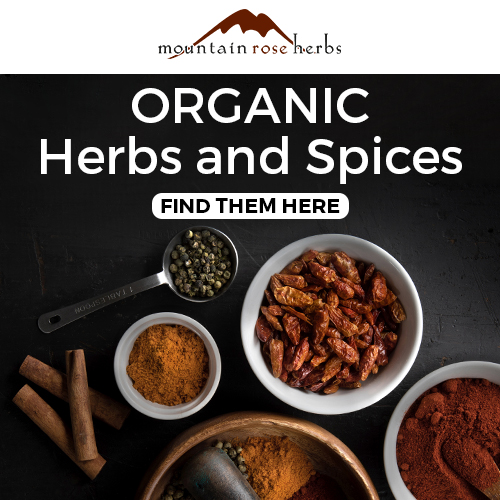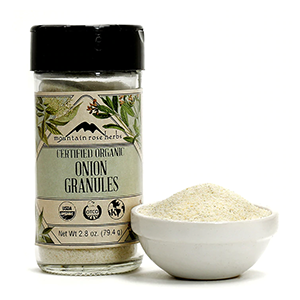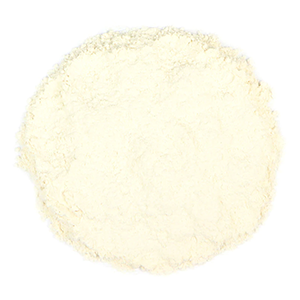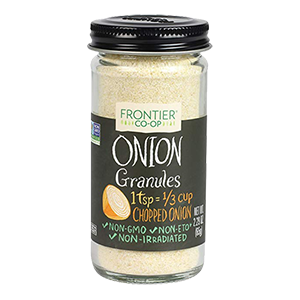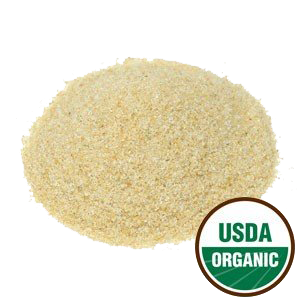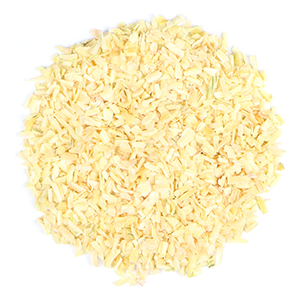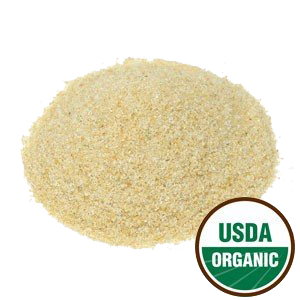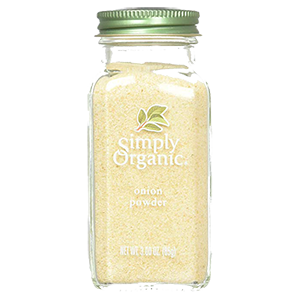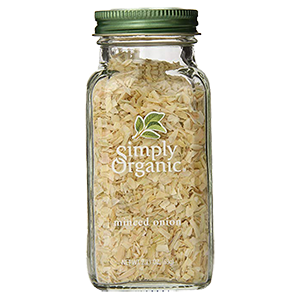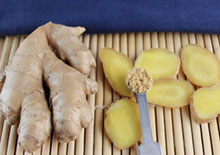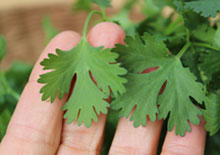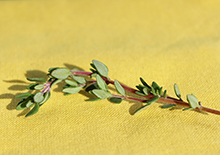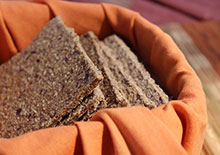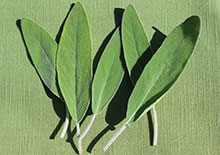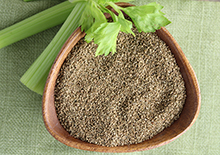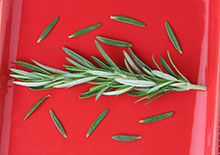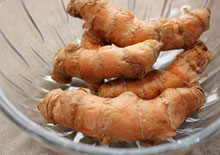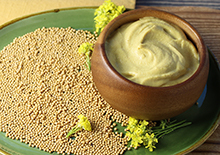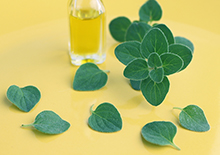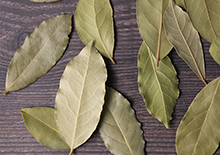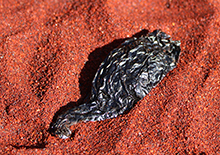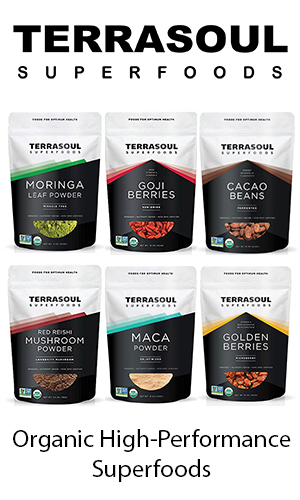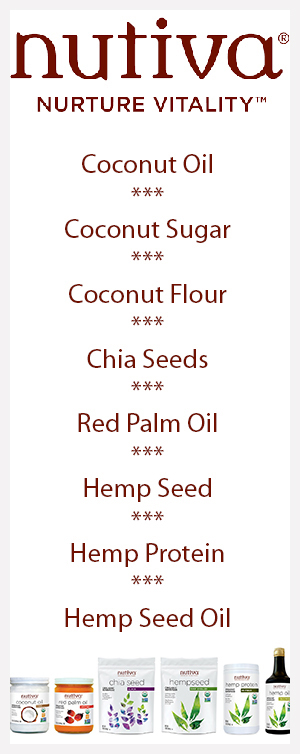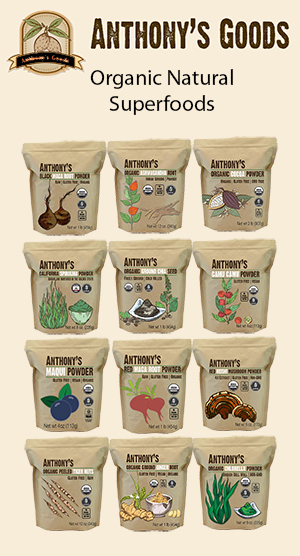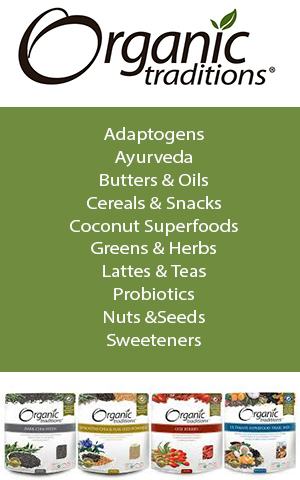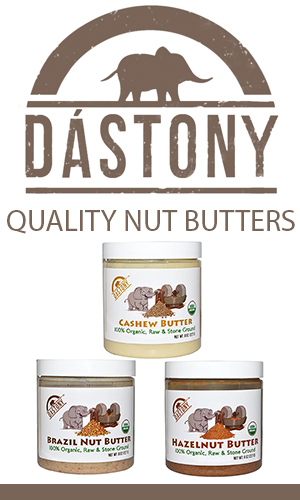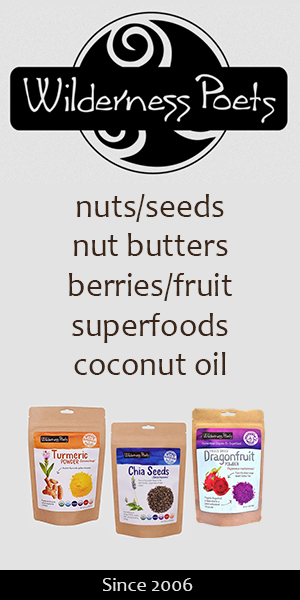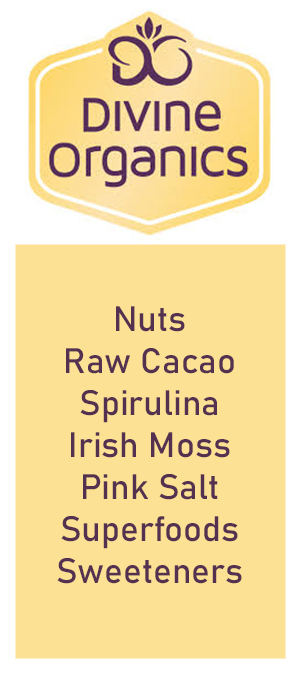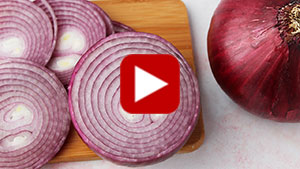- Home
- Herbs and Spices
- Onion Nutrition
Onion Nutrition, Benefits of a Common Culinary Vegetable
Intro | History and Symbolism | What are Onions? | Difference Btwn Red, Yellow, White | What About Shallots? | Leeks, Green Onions, Chives | Why Make You Cry? | Benefits List | How to Use | Precautions | Shop
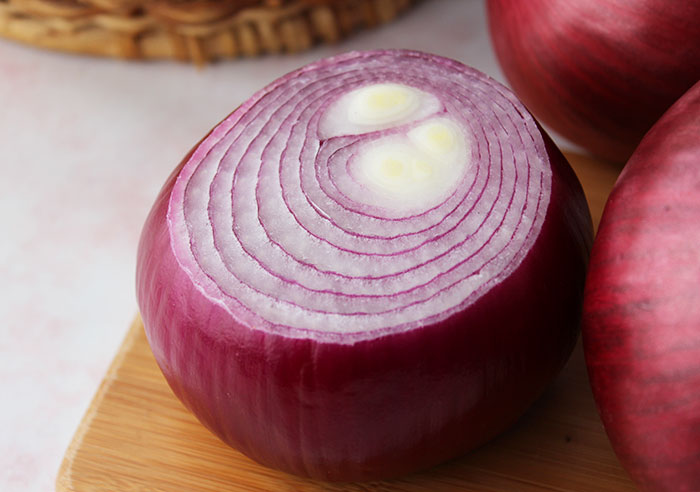
The onion and its many different cultivars are one of the most popular species of Allium vegetables, coming close to garlic for its flavorful taste that blends well into numerous savory dishes and cultural recipes.
There is in fact no other single food that is used by so many different nationalities around the globe then that of the familiar-looking and humble onion bulb.
Eaten raw, sautéed, grilled, simmered and even pickled, onions and their many selections seem to have made a permanent place in the pantries of most kitchens worldwide.
One can easily take for granted this household culinary staple, but onions and their distinctly sharp pungent features have been valued for their unique spiciness as well as potent medicinal properties since prehistoric times.
History and Symbolism of the Onion
Table of Contents
Intro | History and Symbolism | What are Onions? | Difference Btwn Red, Yellow, White | What About Shallots? | Leeks, Green Onions, Chives | Why Make You Cry? | Benefits List | How to Use | Precautions | Shop
One of the believed foraged species utilized by our paleo hunter and gatherer ancestors, the wild onion was likewise one of the first domesticated foods of early agriculture.
Because of their less perishable nature and longer shelf-life, they were a popular vegetable when food preservation methods were less developed.
Onions, with their strong sulfurous odor when sliced, were viewed by
ancient peoples to possess mystical qualities, revered to offer
bodily protection and defense against disease.
The onion was depicted in the art of ancient Egypt and worshiped as a representation of eternal life because of its spherical shape and concentric multilayered rings (or circles within circles) an aspect that is especially visible when sliced.
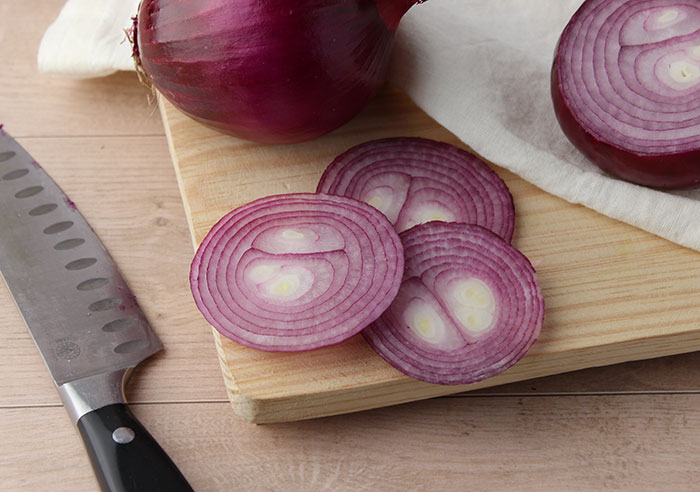
Egyptians commonly used the onion in mummification rituals, with bulbs placed on and in the body. Onions, both bulbs and green tops, were also respected as an alter offering at funerals to honor the dead and protect them in the afterlife.
In ancient Greece, they were viewed as a sign of strength and once used to fortify athletes before Olympic competitions. The juice of the onion was likewise massaged onto the skin by Roman gladiators to "empower the senses" and bestow endurance before battle.
Hanging onions on doors or somewhere in the home is a Greek New
Year's tradition believed to bring good fortune for the year to come.
It
is also speculated that Russian Orthodox churches and their "onion
domes" were inspired from the shape of this common vegetable. Some of
the largest domes erected near Yaroslavl during the 17th century were in
fact famous for their very large cultivated onions.
From a culinary perspective, it's hard to image life without the onion and its unique sweet, heating and pungent qualities. On this page, we'll be discussing some of the onion's therapeutic potential and some of the major compounds that make it stand out from other vegetables.
What are Onions?
Onions are actually a type of bulb root vegetable from the genus Allium. Closely related to garlic, onions are the most widely cultivated plant in the Allium genera.
The common onion is classified under the Allium cepa species of which there are hundreds of different cultivars. These varieties are known for their round juicy bulbs that develop underground and vary in size and shape depending of the amount of daylight they are exposed to.
The main three categories of onions are called: short-day, long-day and day-neutral (also called intermediate) with each being specific for different growing locations and climate zones.
Variations of onions are typically named by their color but also sometimes by the specific cultivar, for example: Walla Walla, Red Burgundy, Cévenne, Yellow Bermuda and Texas Grano. The general color-specific categories include red, yellow and white.
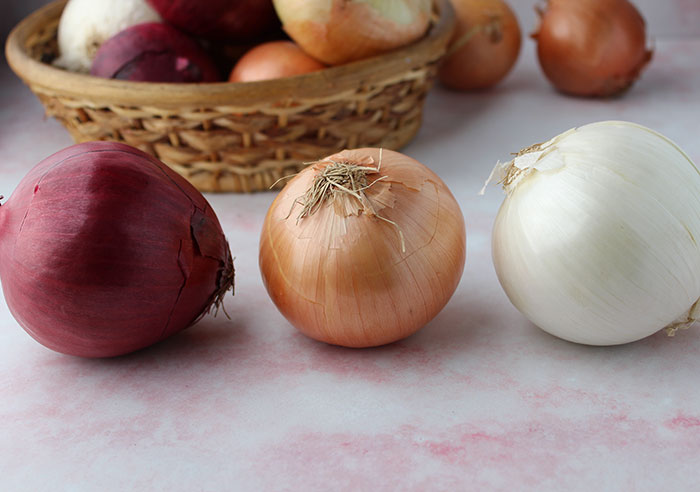
Difference Between Red, Yellow and White Onions
Generally, the different colored onions can be classified according to certain characteristics, but these aspects also of course depend on the specific variety. According to the National Onion Association, about 87% of onions grown are devoted to yellow onion production, with about 8% to red onions and 5% to white onions. (Source)
1) Yellow Onions can have a golden papery skin or a brown one (sometimes called "brown onions"). Yellow types are considered the standard cooking variety. Most varieties called "sweet onion", known for their higher sugar low sulfur content, are the yellow type.
2) White onions are slightly sweet with a sharper flavor
than yellow onions and traditionally used as a raw variety in salsas and
salads.
3) Red Onions have red-purple or magenta pigmentation that is high in anthocyanins. They have a mild sweet spicy flavor and are known to contain greater amounts of beneficial compounds than yellow and white onions.
What About Shallots?
Shallots - Although they grow like garlic in multi-cloved heads, shallots are also considered members of the common onion group. They are known for their unique flavor that resembles a cross between onion and garlic. These types have either red-purple or yellowish skins.
Leeks, Green Onions and Chives
Leeks, green onions and chives are of course related to the common bulb onion but are not necessarily an A. cepa species.
- Leeks are a cultivar of the Allium ampeloprasum, known for their edible thick white-green stalks as opposed to bulbs.
- Green onions or scallions are, like leeks, utilized mostly for their slender aerial above ground portion. Spring onions are similar but have a partially developed bulb. Scallions and spring onions can be cultivars of different Allium species, including A. cepa variations.
- Chives are the very slender green portions of the Allium schoenoprasum species, often identified by their pinkish purple flower heads.
These types can offer the taste of onions but are less heating and more suitable for individuals with digestive sensitivities to common onion bulbs.
Why Do Onions Make You Cry?
Anyone who as ever sliced or chopped a fresh onion has experienced its eye stinging qualities. Its potent fast acting fumes are like nature's equivalent to tear gas or mace.
The specific chemical process involved occurs with the breakdown of sulfenic acids by enzymatic processes which result in the final gas by-product and compound known as syn-Propanethial-S-oxide. It is this sulfur-like substance that is rapidly dispersed into the air, stings the eyes and triggers uncontrollable tearing and flushing reflexes.
This element incidentally is what also gives the onion many of its unique medicinal attributes.
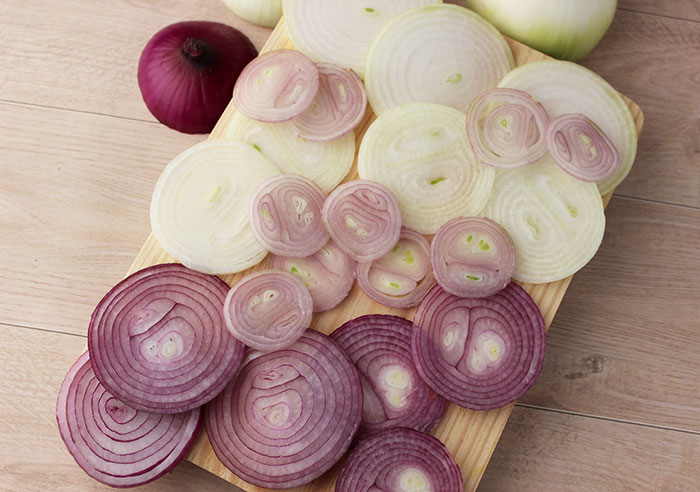
Benefits of Onions, Sulfur and Flavonoids
1) Antibacterial Sulfur-Containing Compounds
2) Quercetin Content and Other Flavonoids in Onions
3) Contains Flavonoids, Like Anthocyanin and Fisetin
4) Use of Onions in Folk Traditions
5) Onion Nutrition and Ayurvedic Medicine
Antibacterial Sulfur-Containing Compounds
One of the strongest health-enhancing properties found in onions come from their sulfuric compounds which give them that strong and sometimes overpowering scent.
Of the Allium species, both garlic and onion have the highest amounts of organosulfur precursors or "cysteine sulfoxides", specifically ASCOs, S-alk(en)yl-L-cysteine sulfoxides, also called alkenyl cysteine sulfoxides (ACSOs). (*) Organosulfur compounds are generally classified according to their functional groups in which sulfur is attached. Hence the term "sulfur-containing."
Some of these sulfur-containing substances isolated from onions
include: onionin A, cycloalliin, γ-glutamylcysteines and isoalliin. (Source)
In some research, alliin was reported to be the major one found in
garlic whereas isoalliin is the predominant one found in onions.
Being a dietary source of sulfur, raw onions are medicinally valued as a natural antimicrobial and antibacterial agent.
Sulfur is also known for its antithrombotic activity, potentially helpful for reducing the formation of blood clots. Consequently, onions are an often recommended dietary adjunct for improving cardiovascular health.
The sulfur content found in onions is viewed to be beneficial to liver detoxification and also known to increase the absorption of lycopene found in foods like tomatoes.
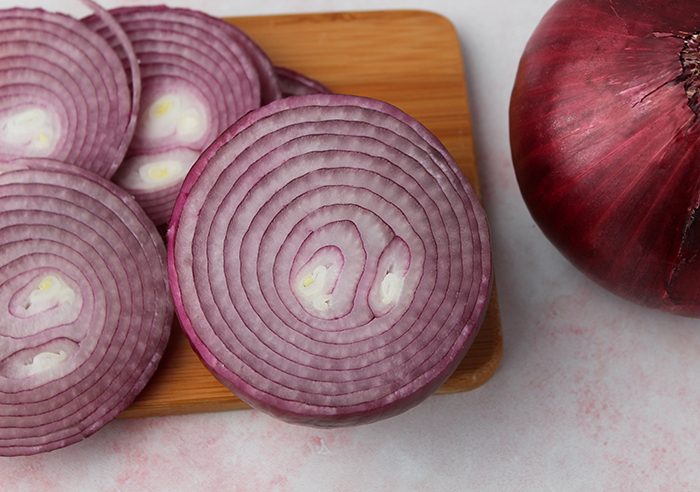
Quercetin Content and Other Flavonoids in Onions
Onion bulbs are a recognized rich source of dietary flavonoids (*) and it doesn't take much online research to find out that they are claimed to be a substantial source of quercetin, a compound from the flavonoid group of polyphenols.
This nutrient is widely prominent in many fruits and vegetables, but it turns out that the onion is considered to be one of the most "common" dietary sources consumed and can thus largely contribute to overall intake.
Quercetin is a type of flavonoid polyphenol, antioxidant and anti-inflammatory that is believed to have a protective influence against various diseases, particularly those involving the cardiovascular system.
The flavonoid content in onions can vary according to cultivar variety and growing conditions, but according to some research, red and yellow types typically may have more than white onions. In the previously mentioned study, red onions were in fact shown to be higher in flavonoids than yellow onion types.
Red onions are known to have higher concentrations especially in their outermost layers and the bottom of the bulb closest to the root.
Therefore, if you'd like to get the most quercetin out of your onions, it is recommended to not over-peel them. In addition, cooking onions can also result in significant onion nutrition loss.
In a study published in Nutrition Journal, it was shown that the benefits of onion-induced antiplatelet activity (OIAA) was preserved by minimizing cooking time or consuming them in their raw unheated state.
Other evidence also suggests that slow cooking by sautéing on low heat is a preferred method to maintaining greater nutrient composition and potency of flavonoids like quercetin.
Contains Flavonoids, Like Anthocyanin and Fisetin
Red onions are, of course, high in the red-purple plant pigment and antioxidant known as anthocyanin. While anthocyanin is considerably more abundant in other foods, like berries, raw red onion varieties can also be supplemental dietary sources chopped into salads or served atop meals.
It has been reported that there are at least 25 different anthocyanins in red varieties, making up about 10% of total flavonoid content.
Fisetin is another less-known flavonoid that is abundant in onion species. It has been studied for its role as an anti-inflammatory agent and its benefits related to chronic inflammatory disorders.
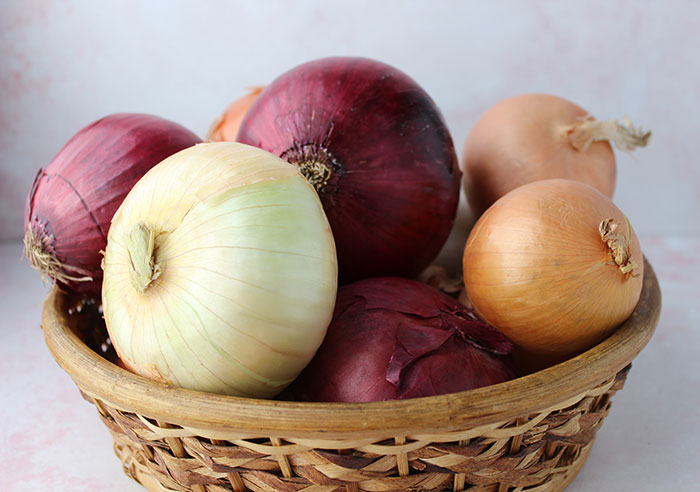
Use of Onions in Folk Traditions
Onions are considered an energetically hot food, particularly in their raw unheated form. They have been utilized throughout the ages for their usefulness as a purifying antibacterial as well as for their ability to increase circulation and enhance immune response.
Placing a piece of sliced raw onion on the souls of the feet was a traditional folk remedy for such purposes. Herbalists likewise use them in homemade preparations, like fire cider, as a respiratory aid, and preventing the onset of a cold or flu.
The juice of an onion is popular for use as an antibacterial hair treatment for healing a dry itchy scalp.
More on Onion Nutrition
In regard to nutrient composition, onions are good sources of vitamin C, B6 and folate and small amounts of various minerals. Again, onion nutrition values are known to decline the more it is heated or cooked.
Onion Nutrition and Ayurvedic Medicine
In Ayurveda, the onion is claimed to have a "rajasic and tamasic energy" known to stimulate the mind, emotions and sexual passions. It is sometimes believed to be more of a powerful medicinal to be used on occasion rather than as an everyday food added to recipes.
Onions, as well as garlic, are therefore not traditionally recommended for those on a spiritual path because they "root the consciousness more firmly in the body", says Ayurvedic practitioner Dr R. Svoboda.
Additionally, onions and their heating qualities can be too hot for Pitta body types or conditions.
How to Use
Try using red onions in our dehydrated onion bread recipe.
Onions can be consumed raw, cooked or pickled. Their seeds can also be sprouted as a type of onion sprout microgreen.
Raw onions are of course great chopped or thinly sliced into salads or as a garnish. They are great in salsas, pates, dips or when fermenting vegetables. We use them in a base of apple cider vinegar when making our homemade fire cider.
While some onion nutrition may be lost when high heat prepared, they are very tasty when sautéed as their natural sugars tend to caramelize, a characteristic that gives soups like the famed French onion soup variety its rich and sweet flavor.
Dehydrated onion powders, granules or minced varieties are an often included item in many kitchen spice racks for adding to soups, sauces and savory recipes where a less-textural onion flavor is needed.
Precautions:
In large quantities, raw onions may exacerbate some conditions like acid reflux, intestinal inflammation, IBS, colitis or ulcers. Their heating nature may also be too hot for Pitta body types. Avoid consuming onions if you are allergic and/or react to foods in the Allium family.
Shop Related Products (About Affiliates & Amazon Associate Paid Links)
Affiliate Disclaimer: This section contains affiliate product links. If you make a purchase through our recommended links, we receive a small commission at no additional cost to you. Thanks for the support.

